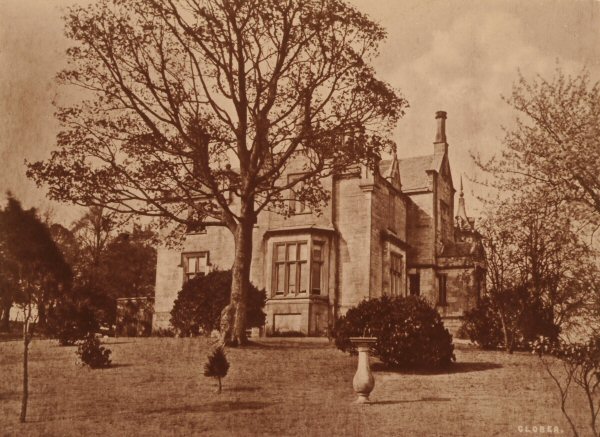

THE seat of Alexander Dunlop, Esq., advocate, is situated in the parish of New Kilpatrick, and county of Stirling, about eight miles from Glasgow. (1)
The original part of the house was built in 1773 by the proprietor, James Macgregor, merchant in Glasgow, (2) on nearly the same site as that of an old house which stood on the banks of the Allander, and of which part still remains.
In 1833 large additions were built, from plans furnished by John Baird, architect, Glasgow, and Clober is now a very comfortable and pleasant residence.
James Macgregor was succeeded in the property by his nephew, Robert Dunlop, of the firm of Dunlop, Hamilton, & Co., (3) Glasgow, and his son, Alexander Dunlop, is the present owner.
Mr. Dunlop passed advocate in 1817. When he lived at Clober he took a great interest in county matters, and was much respected. He was then a keen politician, and took an active part on the Whig side in the former closely contested elections for Stirlingshire. He now resides in Edinburgh.
There is a peculiar interest attached to Clober, from its being the scene of some of the works of the celebrated natural philosopher and engineer, James Watt. (4) The bleachfield here, which has been long famous, was planned by him for his father-in-law, Mr. Macgregor, and, during its construction, he superintended the making of the water courses and the erection of the machinery. This bleachfield is still in operation.
The house has been occupied for several years by Dr. J. G. Fleming, of Glasgow.
(1) It is built on long lease on part of the lands of Clober, a property formerly part of the Barony of Mugdock, but now and for long previously an outlying portion of the estate of Dougalston. This estate was long a holding of a family of Grahams, cadets of Mugdock, and many of its members esteemed and valuable citizens of Glasgow. Archibald Hamilton Grahame and James Grahame now represent this good old family in Glasgow. Mr. Robert Ker of Dougalston is now the proprietor of the lands of Clober.
(2) Among other children, Mr. Macgregor had two daughters, one of whom married the celebrated James Watt, and the other, James Smith of Craighead.
(3) The Hamilton of this firm was Captain William Hamilton, a man of good family. His wife was one of the Miss Boswells of Ayr. He began life as a soldier, but after attaining the rank of captain he retired and went into business with Mr. Dunlop.
(4) James Watt was born in Greenock, and Glasgow very nearly missed the honour, through the narrow selfishness of one of its incorporations, of having any share in him, and of having one of the greatest of Scotsmen for a citizen. On his proposing to set up as an instrument maker in Glasgow, he was prevented by the "Hammermen," on the real or fancied ground of his doing so being a breach of their privileges. He was not even allowed to have a room for the purpose of making experiments only. Fortunately for Glasgow and the world, the University had larger views of the aims of Mr. Watt than the City. A room was assigned to him within its buildings, where he could not be interfered with, being out of the control of the city regulations, and here he matured his plans, and produced the model of his celebrated Steam Engine.
He afterwards turned his attention very much to civil engineering, and to the constructions of canals and works such as those at Clober.
Back to Contents